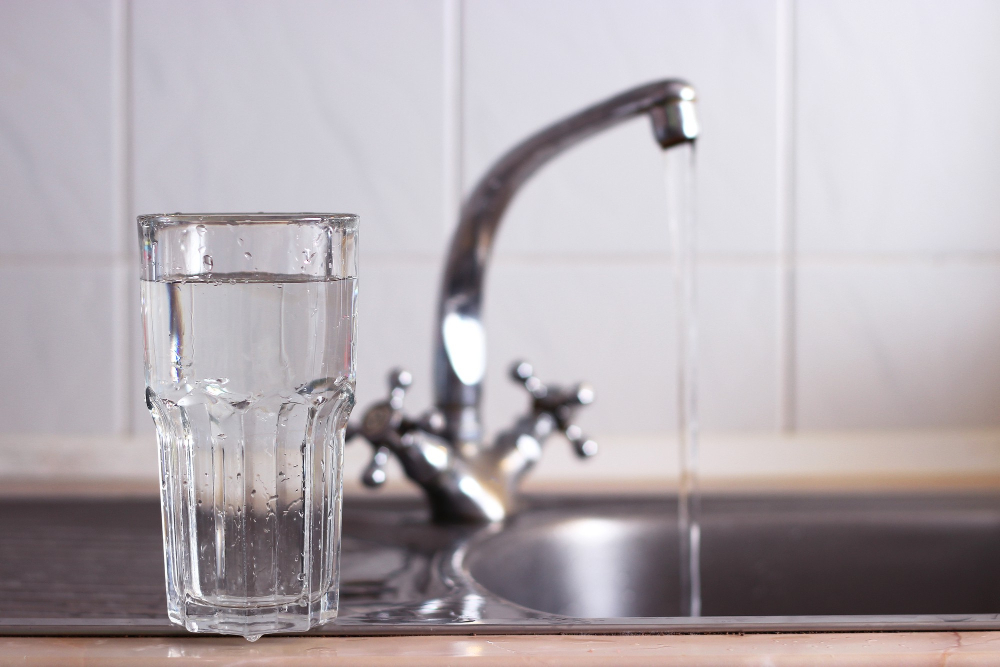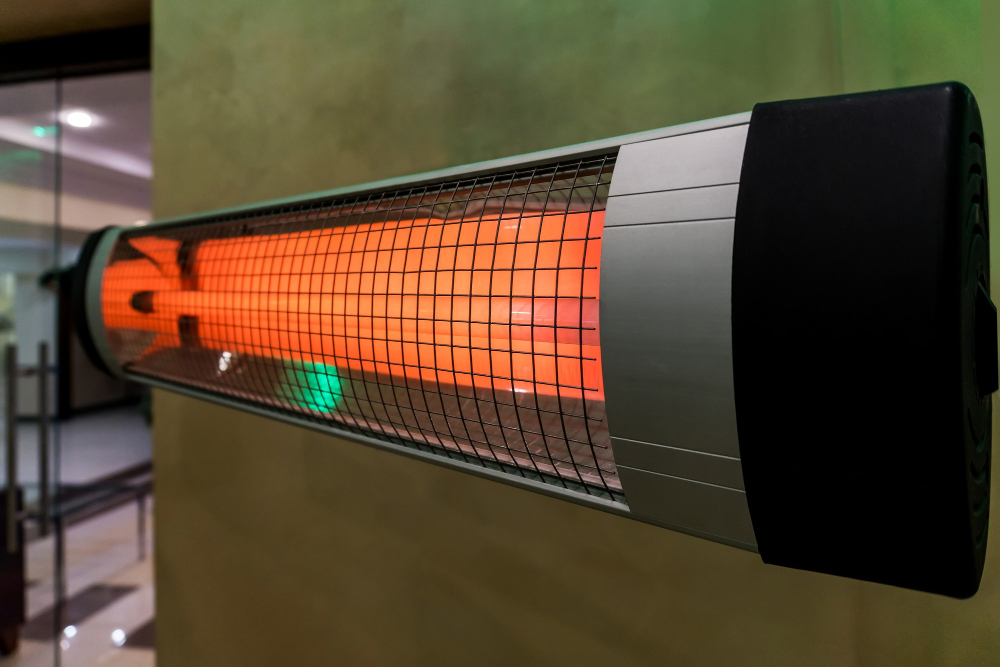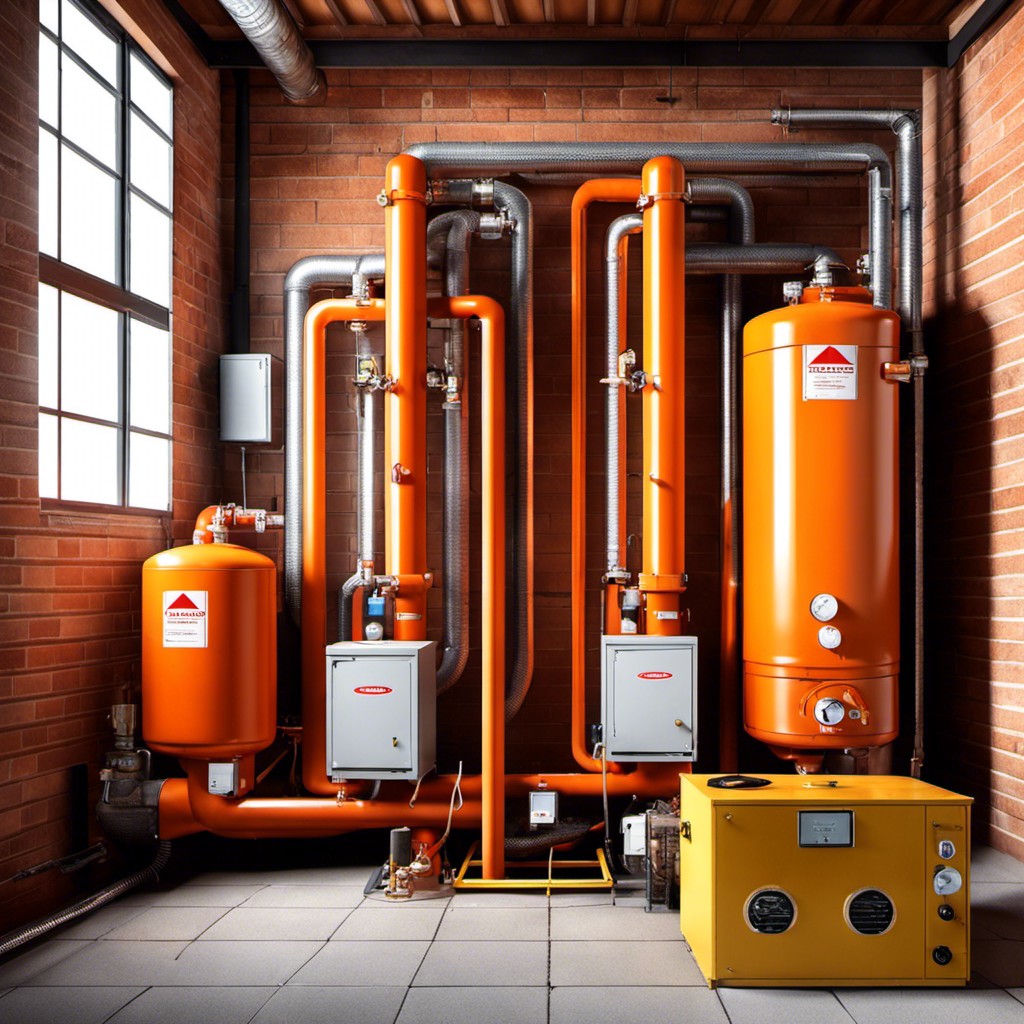Last updated on
Discover a variety of effective alternatives to fire sprinkler systems that can enhance safety and protect your property from potential fire hazards.
Fire sprinkler systems are a common safety measure installed in many homes and buildings. While they are effective in extinguishing fires, they can also be costly to install and maintain.
But what if we told you that there are alternative ways to protect your home or business from fire damage? In this article, we’ll explore some of the best alternatives to traditional fire sprinkler systems that won’t break the bank. From foam suppression systems to misting systems, we’ve got you covered with budget-friendly options that will keep your property safe from flames.
So let’s dive in and discover some innovative ways to safeguard your space without sacrificing style or functionality!
Water Mist Systems
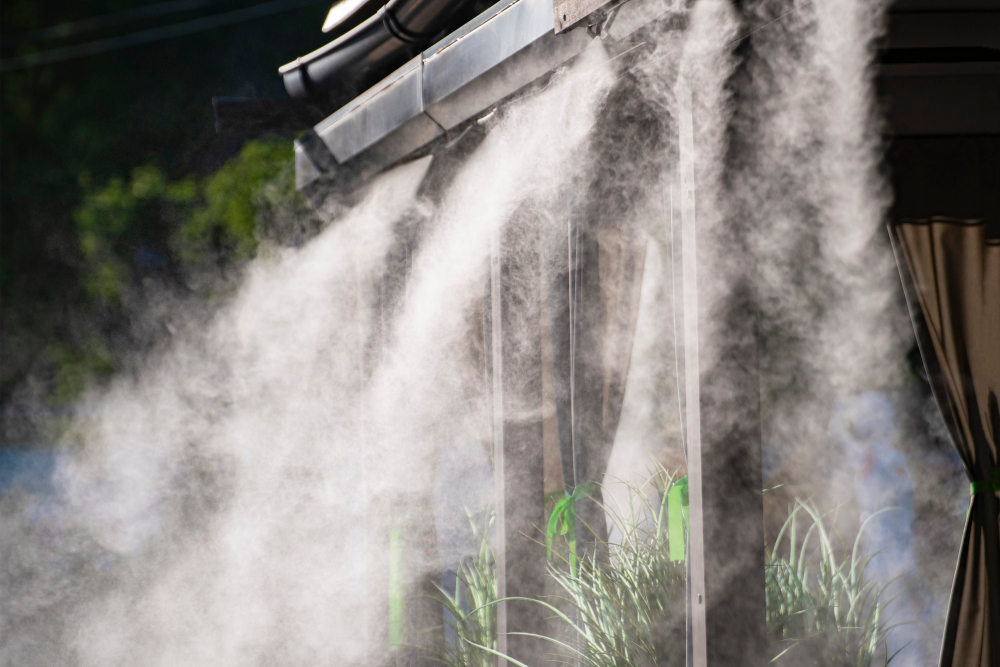
These systems use high-pressure water mist to extinguish fires, making them an effective and eco-friendly option for those looking to protect their property from potential fire hazards. Water mist systems work by creating a fine spray of water droplets that quickly evaporate, reducing the oxygen levels in the area and suppressing the flames.
One of the main advantages of water mist systems is that they use significantly less water than traditional sprinklers, which can help minimize damage caused by flooding during or after a fire. Because they don’t require large pipes or tanks like other suppression methods do, installation costs tend to be lower.
Water mist systems are also highly versatile and can be used in various settings such as commercial buildings with sensitive equipment or historical structures where preserving architectural features is essential.
Gaseous Suppression
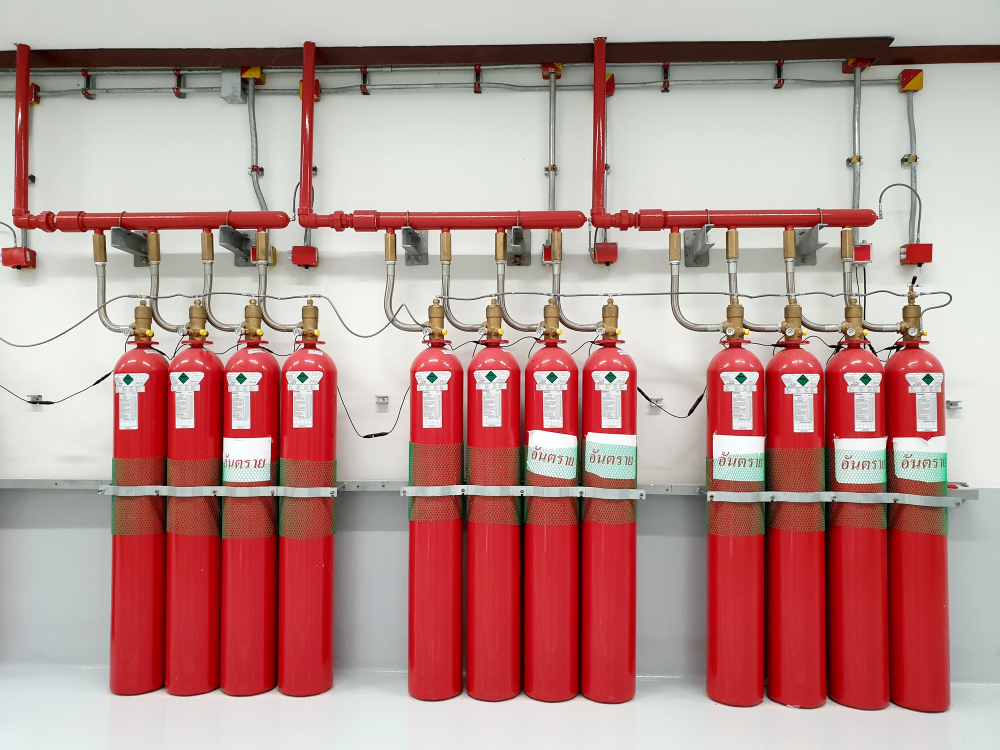
These types of systems use a combination of inert gases and chemical agents to suppress fires quickly and effectively. They work by reducing the oxygen levels in the room, which suffocates the flames.
One advantage of gaseous suppression is that it does not leave any residue or water damage behind, making it an ideal solution for sensitive equipment or areas where water could cause significant damage. These types of systems can be installed in small spaces where traditional sprinklers may not fit.
However, there are some downsides to consider when choosing a gaseous suppression system over other alternatives. For example, they can be expensive to install and maintain compared with other options like foam-based solutions or dry pipe sprinklers.
Gaseous Fire Suppression Systems
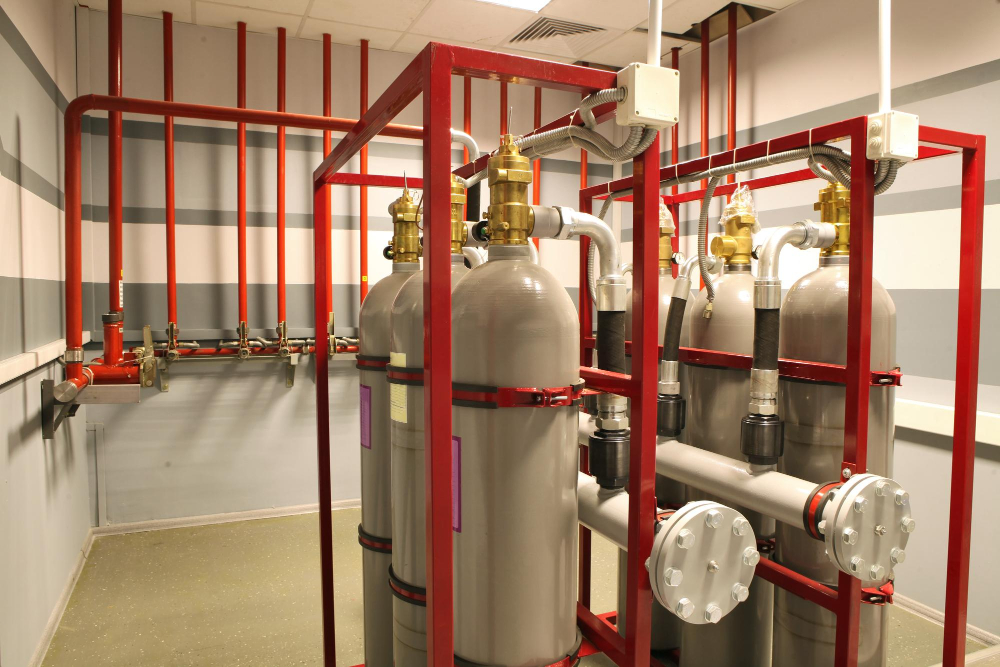
These types of systems use inert gases or chemical agents to extinguish fires quickly and effectively without causing damage to the surrounding area. They work by reducing the oxygen levels in the room, which suffocates the flames.
One of the most significant advantages of gaseous fire suppression is that it can be used in areas where water-based solutions may not be suitable, such as server rooms or data centers. These types of systems require less maintenance than traditional sprinklers and can often be installed more discreetly.
However, it’s important to note that gaseous fire suppression does come with some potential drawbacks. For example, if not properly designed and installed by a professional technician familiar with local codes and regulations for gas storage containers (e.g., NFPA 2001), there could be risks associated with leaks or explosions from over-pressurization during discharge events.
Oxygen Reduction Systems for Fire Prevention
This system works by reducing the amount of oxygen in a room to below 15%, which makes it difficult for fires to start or spread. Oxygen reduction systems are ideal for data centers, archives, museums and other facilities that house valuable items that could be damaged by water or chemicals used in traditional sprinkler systems.
These types of fire suppression solutions use nitrogen gas generators to remove excess oxygen from the air and maintain a safe environment without affecting human health. The process is automated and can be monitored remotely, making it an efficient solution with minimal maintenance requirements.
Foam-Based Systems
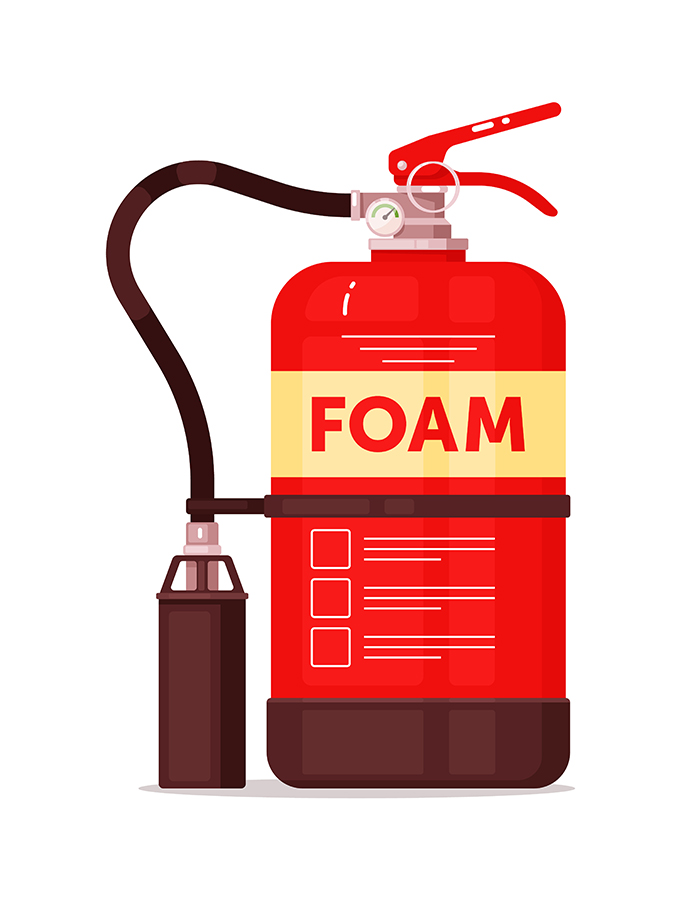
These types of systems use foam instead of water to extinguish fires, making them ideal for areas where water damage could be a concern. Foam-based solutions work by creating a blanket-like layer over the fuel source, which suffocates the flames and prevents oxygen from reaching it.
One advantage of foam-based suppression is that it can be used on both Class A (wood, paper) and Class B (flammable liquids) fires. This makes them versatile in terms of application and suitable for many different environments such as warehouses or industrial facilities.
Another benefit is that they require less water than traditional sprinklers since they rely on foam rather than large amounts of H2O to put out the fire. This means less potential damage caused by flooding or excess moisture after an incident has occurred.
Foam-based Fire Suppression Solutions
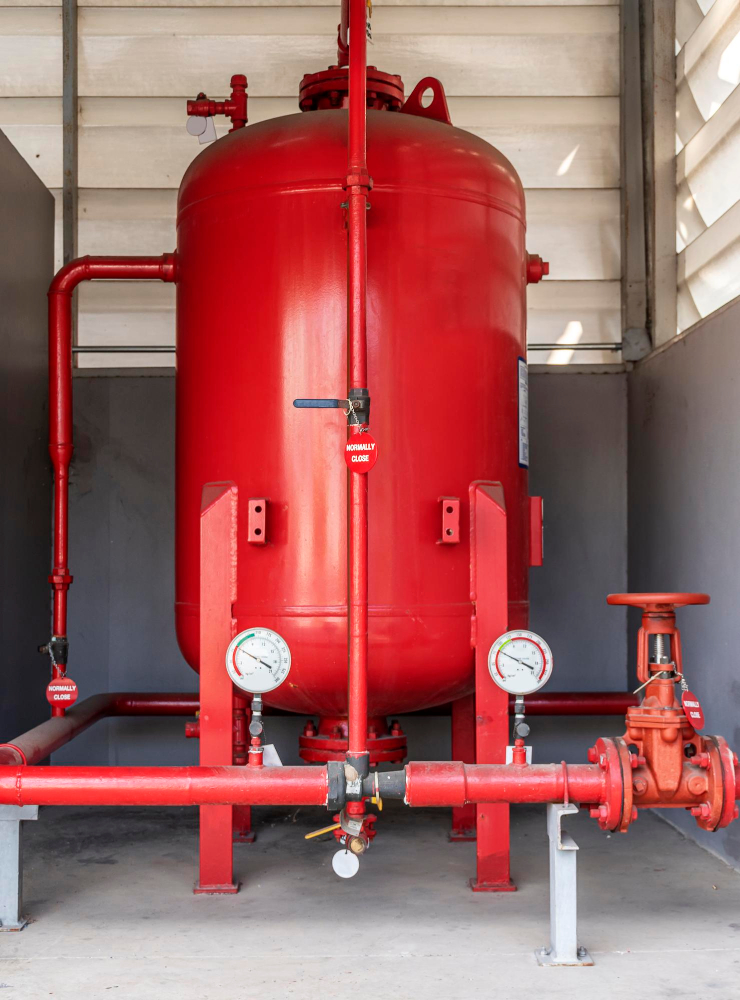
These systems work by releasing a foam mixture that quickly extinguishes flames and prevents re-ignition. Foam-based solutions can be used in a variety of settings, including industrial facilities, warehouses, and even residential homes.
One of the benefits of foam-based fire suppression is its ability to cover large areas with minimal water damage. Unlike traditional sprinklers that release gallons upon gallons of water onto the affected area, foam suppressants use less water while still effectively putting out fires.
Another advantage is their versatility in handling different types of fires such as flammable liquids or gases which cannot be put out using conventional methods like water or carbon dioxide extinguishers.
Dry Pipe Sprinklers
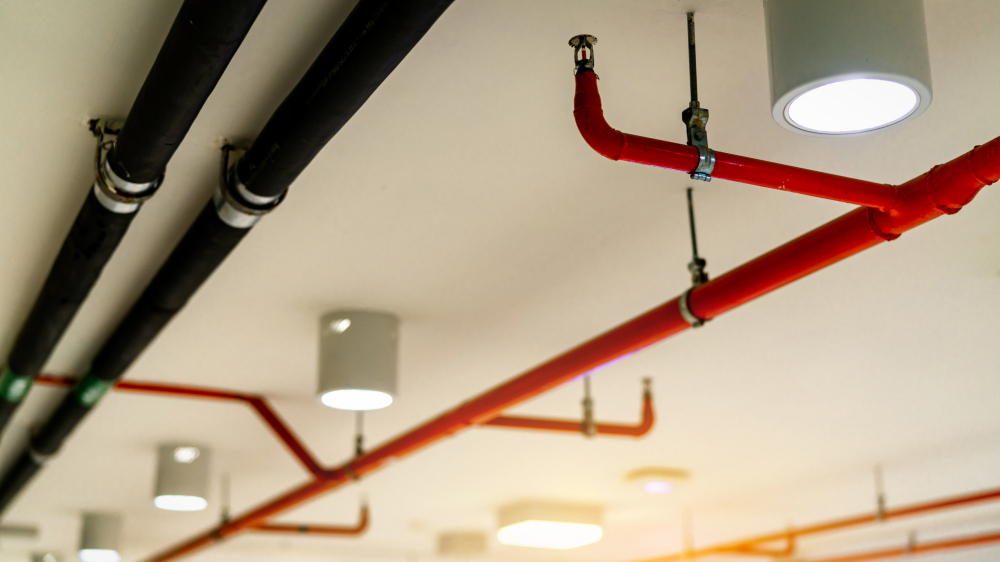
They work by filling the pipes with pressurized air or nitrogen instead of water, which prevents water from flowing through the system until a fire is detected. Once a fire is detected, the air pressure in the pipes drops and allows water to flow through and extinguish it.
This type of system is ideal for buildings that experience freezing temperatures since there’s no risk of frozen pipes bursting due to trapped water. Dry pipe sprinklers are also useful in areas where there’s high humidity or moisture levels that could cause corrosion on metal piping.
While dry pipe sprinkler systems can be more expensive than traditional ones due to their complexity, they’re still an excellent option for those looking for alternatives without sacrificing safety measures. Plus, they require less maintenance than wet pipe systems since there’s no standing water present in them at all times.
Pre-Action Systems
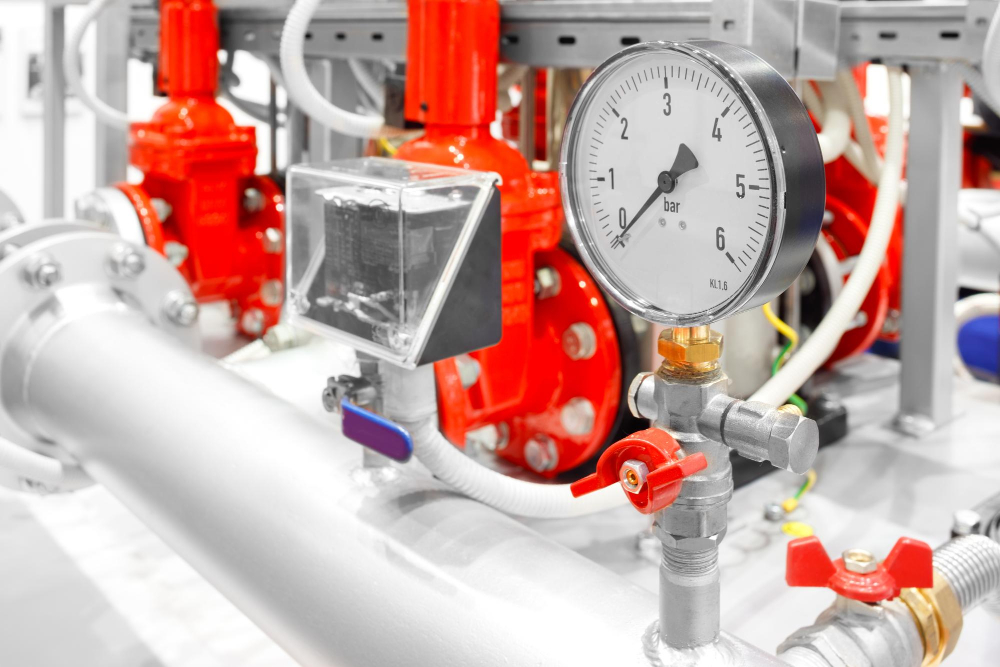
These systems work by filling the pipes with pressurized air or nitrogen, which keeps water from flowing until a fire is detected. Once a fire is detected, the pre-action valve opens and water flows into the piping system and out of any open sprinklers.
One of the benefits of pre-action systems is that they reduce false alarms since there must be two triggers before water will flow: first, detection of smoke or heat; secondly activation by a sprinkler head. This makes them ideal for use in areas where accidental discharge could cause significant damage such as data centers or museums.
However, it’s important to note that these types of systems require regular maintenance and testing to ensure proper functionality when needed most. It’s also essential to have them installed by professionals who understand their unique requirements.
Deluge Systems
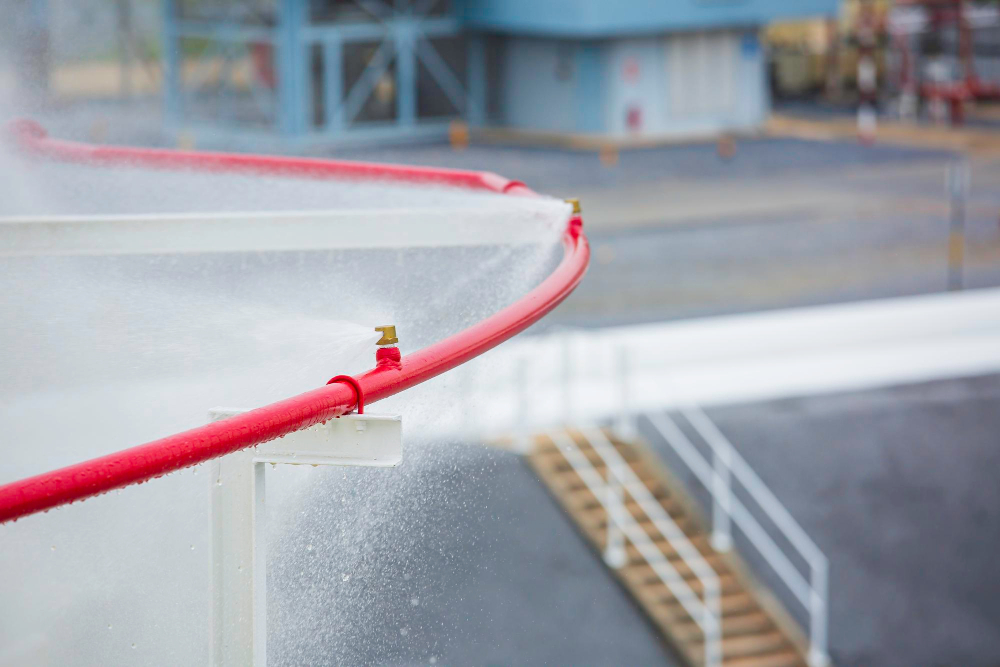
They work by releasing large amounts of water through open nozzles when a fire is detected, flooding the area and extinguishing the flames. These types of systems are commonly used in high-hazard areas such as chemical storage facilities or power plants.
One advantage of deluge systems is that they can cover a larger area than traditional sprinklers, making them ideal for protecting large spaces with flammable materials. However, they do require more water and may cause significant damage to property due to the amount of water released.
It’s important to note that deluge systems should only be installed by professionals who have experience working with these types of complex fire suppression solutions. Regular maintenance checks should be conducted on these units to ensure their proper functioning in case an emergency arises.
Dry Chemical Extinguishing Systems
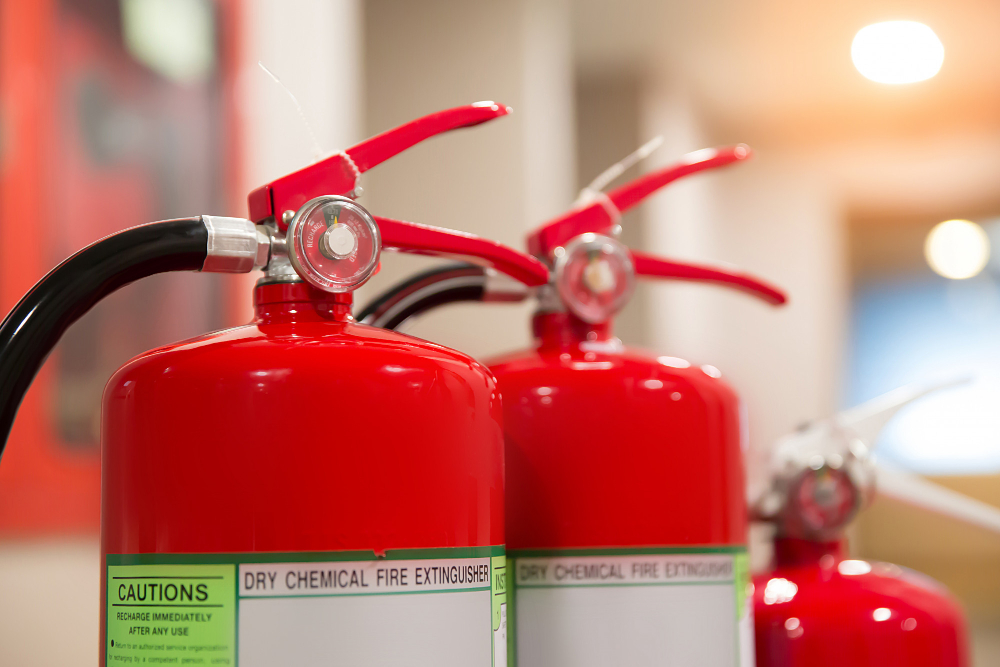
These systems use a dry chemical powder that is released when the system detects a fire. The powder works by interrupting the chemical reaction of the fire, effectively extinguishing it.
One of the benefits of dry chemical extinguishing systems is their versatility in fighting different types of fires, including Class A (wood and paper), Class B (flammable liquids), and Class C (electrical) fires. They can also be used in areas where water-based suppression methods may not be suitable or effective.
However, it’s important to note that while these systems are effective at putting out fires quickly, they can leave behind residue that may require extensive cleanup after use. Some types of dry chemicals used in these systems can be harmful if ingested or come into contact with skin.
Fire Suppression Blankets
These blankets are made of flame-resistant materials that can be used to smother small fires or wrap around larger objects, such as machinery or equipment, in the event of a fire emergency. Fire suppression blankets work by cutting off the oxygen supply to flames and preventing them from spreading further.
One major advantage of using fire suppression blankets is their portability. They can be easily stored in a cabinet or on a shelf for quick access during an emergency situation.
They do not require any special installation procedures like other types of fire protection systems.
However, it’s important to note that while these blankets may be effective at extinguishing small fires quickly before they escalate into larger ones; they should not replace more comprehensive safety measures such as smoke detectors and sprinkler systems.
Fire Extinguishers
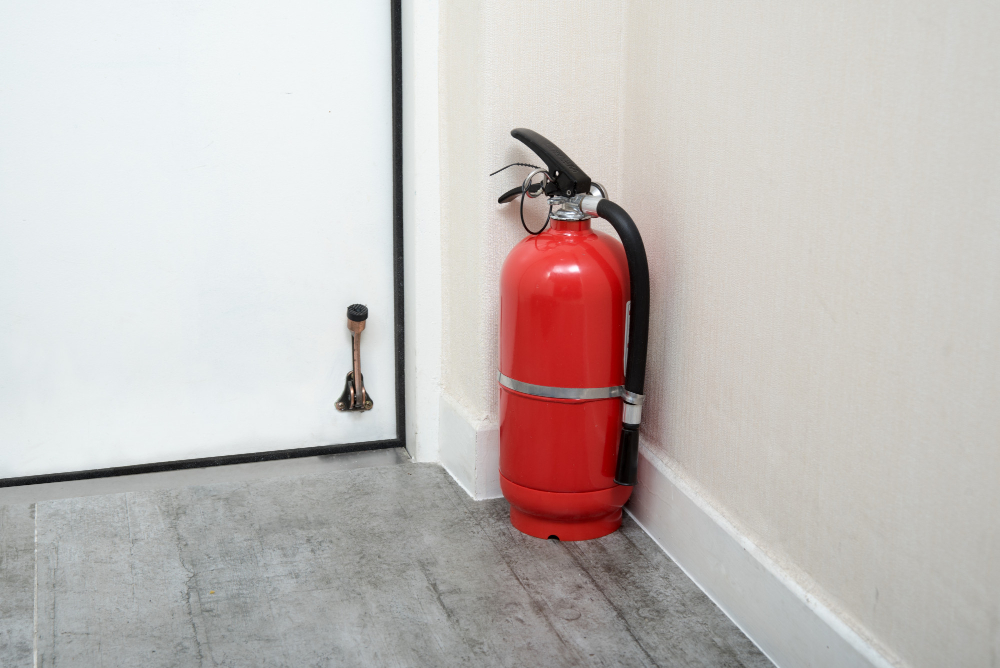
These portable devices are easy to use and can quickly put out small fires before they become larger, more dangerous flames. Fire extinguishers come in different types, each designed for specific classes of fires such as Class A (ordinary combustibles), Class B (flammable liquids), or Class C (electrical).
It’s important to choose the right type of extinguisher for your space and ensure that it is properly maintained and inspected regularly.
While fire sprinkler systems may be effective in putting out large-scale fires, having a few strategically placed fire extinguishers throughout your home or business can provide an added layer of protection against smaller incidents. Plus, they’re relatively inexpensive compared to other suppression options.
In addition to traditional handheld models, there are also automatic fire suppression systems that utilize foam or dry chemical agents instead of water-based solutions like sprinklers. These systems activate when smoke detectors detect a potential threat and release their contents automatically without human intervention.
Passive Fire Protection Measures
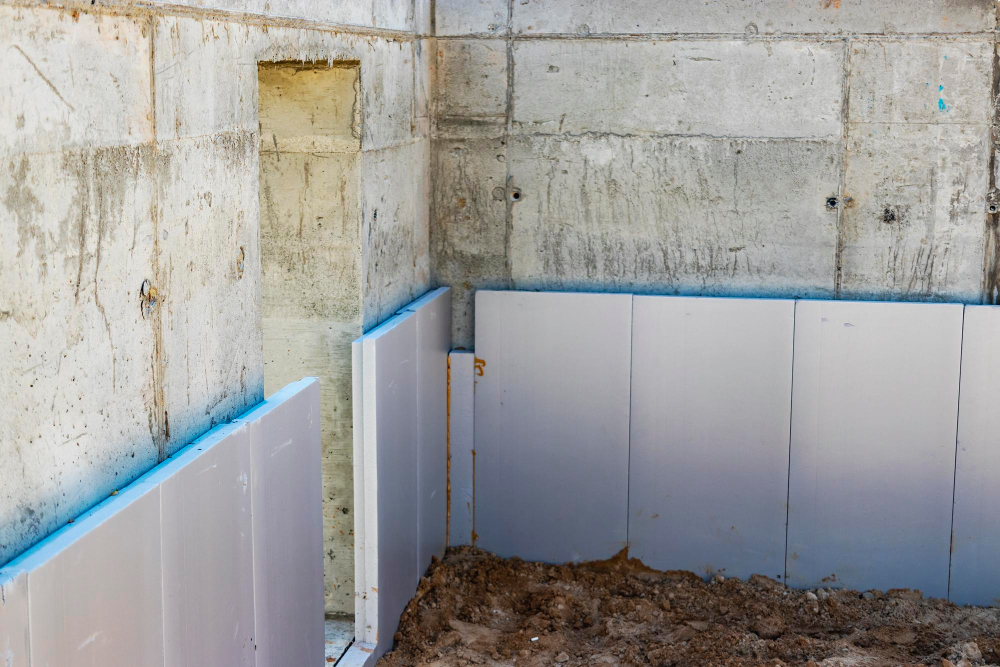
These measures work by containing the spread of flames and smoke, limiting damage and providing additional time for occupants to evacuate safely.
One example of a passive fire protection measure is the use of fire-resistant materials in construction. This includes using non-combustible building materials such as concrete, brick or stone instead of wood.
Installing insulation made from mineral wool or fiberglass can help prevent fires from spreading through walls and ceilings.
Another effective way to contain fires is through compartmentation – dividing buildings into smaller sections with walls and doors that have a high resistance to heat transfer. This helps prevent the spread of flames between rooms or floors.
Smoke detectors are another important component in any passive fire protection system as they provide early warning signs when smoke is detected before it turns into an actual flame.
Fire-Retardant Coatings

These coatings can be applied to walls, ceilings, and other surfaces in your home or business to slow down the spread of flames in case of a fire. They work by creating a barrier between the surface and the heat source, preventing ignition and reducing flame spread.
One advantage of using fire-retardant coatings is that they are cost-effective compared to installing sprinkler systems. These coatings do not require any maintenance once applied properly.
There are different types of fire retardants available on the market today with varying levels of effectiveness depending on their composition. Some common materials used for making these products include intumescent paints which expand when exposed to high temperatures forming an insulating layer over surfaces; cementitious sprays which create a thick coating that resists heat transfer; and epoxy-based solutions that provide long-lasting protection against fires.
Fire and Smoke Detection Systems
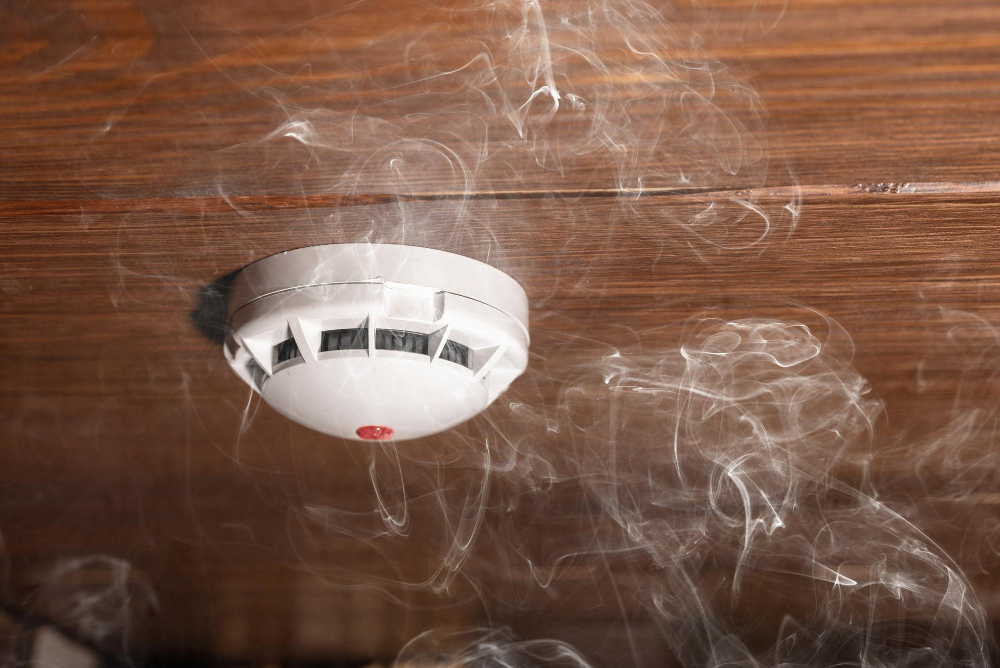
These systems can detect smoke, heat, or flames and alert occupants to evacuate the building before a fire spreads out of control. There are several types of detection systems available on the market today, including smoke detectors, heat detectors, and flame detectors.
Smoke Detectors use sensors that detect particles in the air caused by combustion. They come in two main types: ionization smoke alarms that work best for detecting fast-burning fires with small particles; photoelectric alarms which work better for slow-burning fires with larger particles.
Heat Detectors operate based on temperature changes rather than detecting actual flames or smoke. They trigger an alarm when they sense a significant increase in temperature within their range.
Flame Detectors use infrared technology to identify light emitted from flames even before there is visible evidence of a fire outbreak. When choosing between these different options it’s important to consider your specific needs as well as local regulations regarding what type(s) must be installed where you live or work.
In addition to installing detection systems throughout your property it’s also important to ensure they’re properly maintained so they’ll function correctly if needed during an emergency situation.
Smoke Detectors

They detect smoke particles in the air and sound an alarm to alert occupants of a potential fire. Smoke detectors come in two types: ionization and photoelectric.
Ionization smoke detectors use a small amount of radioactive material to ionize the air inside the detector chamber. When smoke enters, it disrupts this process, triggering the alarm.
Photoelectric smoke detectors use a beam of light that is aimed away from its sensor but can be reflected back by airborne particles such as dust or water droplets produced by combustion processes like burning wood or paper products; when these particles enter into contact with said beam they scatter it towards sensors which then trigger alarms.
It’s important to note that both types have their strengths and weaknesses, so experts recommend using both for maximum protection against fires.
Heat Detectors
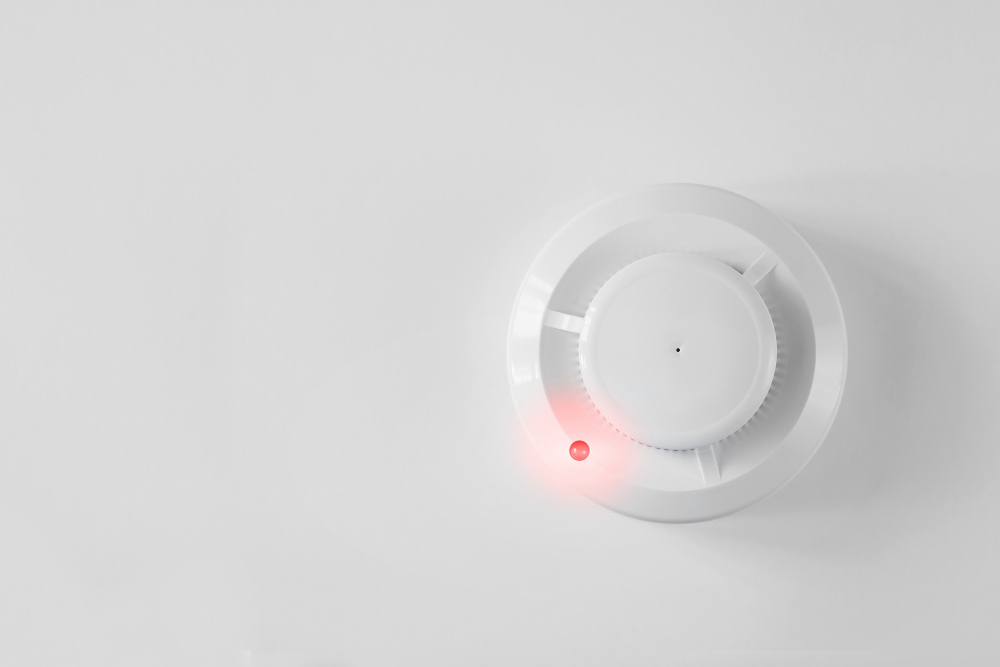
These devices are designed to detect a significant increase in temperature and trigger an alarm or alert system, allowing occupants of the building to evacuate before the fire spreads.
There are two types of heat detectors: fixed-temperature and rate-of-rise. Fixed-temperature heat detectors activate when a specific temperature threshold is reached, while rate-of-rise detects rapid increases in temperature.
Heat detectors can be installed in areas where smoke alarms may not be suitable due to high levels of dust or moisture, such as garages or kitchens. They can also be used as part of an overall fire detection system that includes smoke alarms and other sensors.
While they do not extinguish fires like sprinkler systems do, heat detectors provide early warning signs that allow people inside the building enough time for evacuation before it’s too late. It’s important to note that these devices should never replace traditional smoke alarms but rather complement them for maximum safety measures against potential fires.
There are various alternatives available today instead of relying solely on expensive traditional fire sprinklers for protection against potential hazards caused by flames.
Flame Detectors
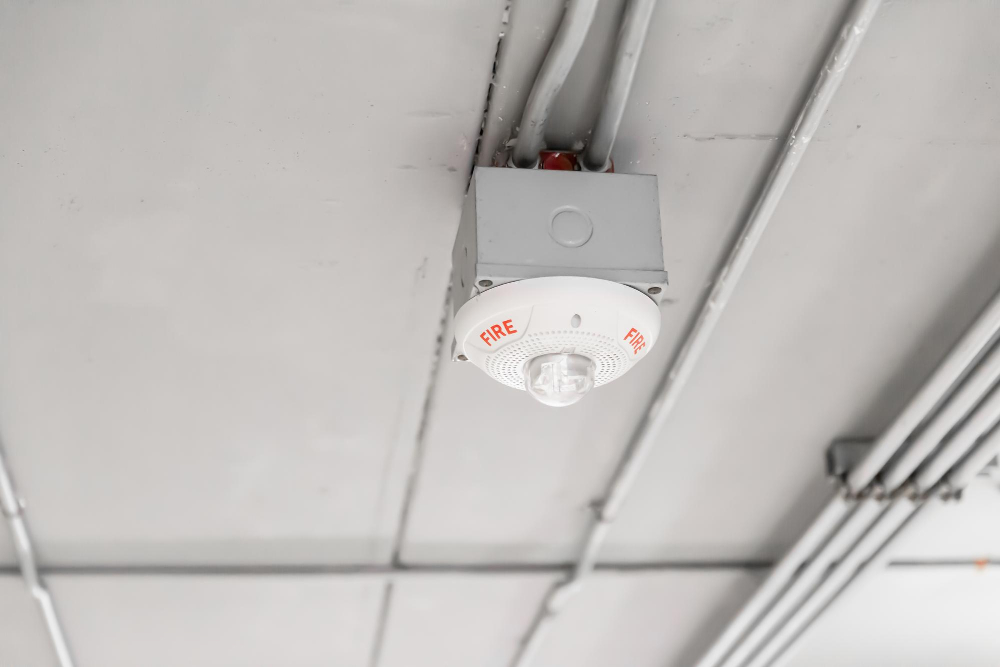
These devices are designed to detect flames and alert occupants of a potential fire hazard. Flame detectors work by sensing the ultraviolet (UV) or infrared (IR) radiation emitted by flames, which triggers an alarm system.
There are two main types of flame detectors: UV and IR. UV flame detectors sense short-wavelength radiation that is produced when hydrocarbons burn in a fire, while IR flame detectors sense long-wavelength radiation that is produced when objects heat up due to combustion.
While not as common as other alternatives like water mist or foam-based systems, using flame detection technology can be an effective way to protect your property from fires without relying on traditional sprinklers. However, it’s important to note that these devices should be installed by professionals who have experience with their proper placement and maintenance.
There are many alternatives available for those looking for ways to enhance safety measures against potential fires without breaking the bank on expensive sprinkler systems.
Fire Barriers and Compartmentation

These measures help to contain fires, prevent them from spreading, and provide occupants with a safe escape route. Fire barriers can be walls or floors that have been designed to resist the spread of flames for a specified period.
They are typically made from materials such as concrete, brick, or gypsum board.
Compartmentation involves dividing a building into smaller areas using fire-resistant walls and doors. This helps to limit the spread of smoke and flames by containing them within specific compartments.
Both fire barriers and compartmentation play an important role in preventing fires from becoming catastrophic events that could cause significant damage or loss of life. By implementing these measures in your home or business space, you can significantly reduce the risk associated with potential fires.
It’s worth noting that while these passive protection systems are effective at slowing down the progress of a blaze; they do not extinguish it entirely like active suppression systems would do (such as sprinklers). Therefore it is crucial always to have working smoke detectors installed throughout your property so you will be alerted early enough if there is ever an outbreak.
FAQ
What is a fire suppression system that doesn t use water?
A fire suppression system that doesn’t use water is a gas system, utilizing a chemical agent called FM200 for immediate flame suppression, making it suitable for rooms with large amounts of electrical equipment.
What are 4 types of sprinkler systems?
There are four types of sprinkler systems according to NFPA 13: wet, dry, preaction, and deluge.
What replaced halon systems?
Chemical alternatives like carbon dioxide, foam, water, and dry chemical, as well as engineering alternatives such as rapid response and fire resistant structures, replaced halon systems.
How do clean agent fire suppression systems work?
Clean agent fire suppression systems work by releasing gaseous agents that extinguish fires through heat absorption and chemical reactions, without leaving residue.
What is the role of inert gas systems in fire protection?
Inert gas systems play a crucial role in fire protection by diluting the oxygen concentration below a flammable level, thereby suppressing fires and preventing explosions.
How do foam-based fire suppression systems differ from the traditional sprinkler systems?
Foam-based fire suppression systems differ from traditional sprinkler systems by using foam concentrates to suppress flames, while traditional systems use water to extinguish the fire.
Recap
Liked this article? Here's what you can read next:

